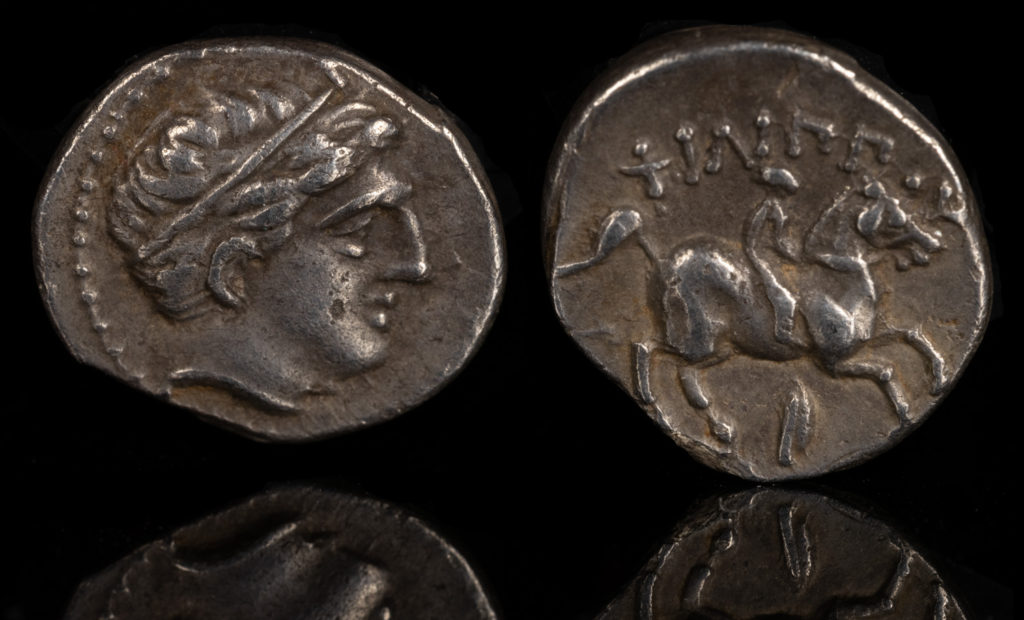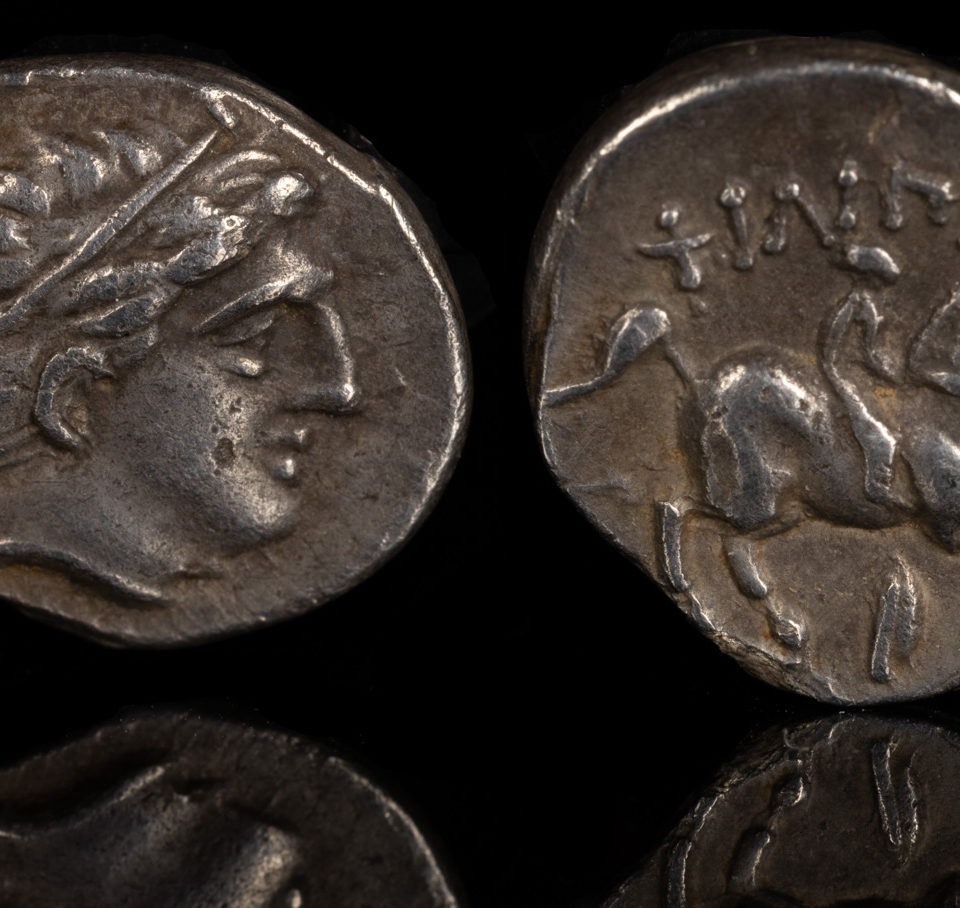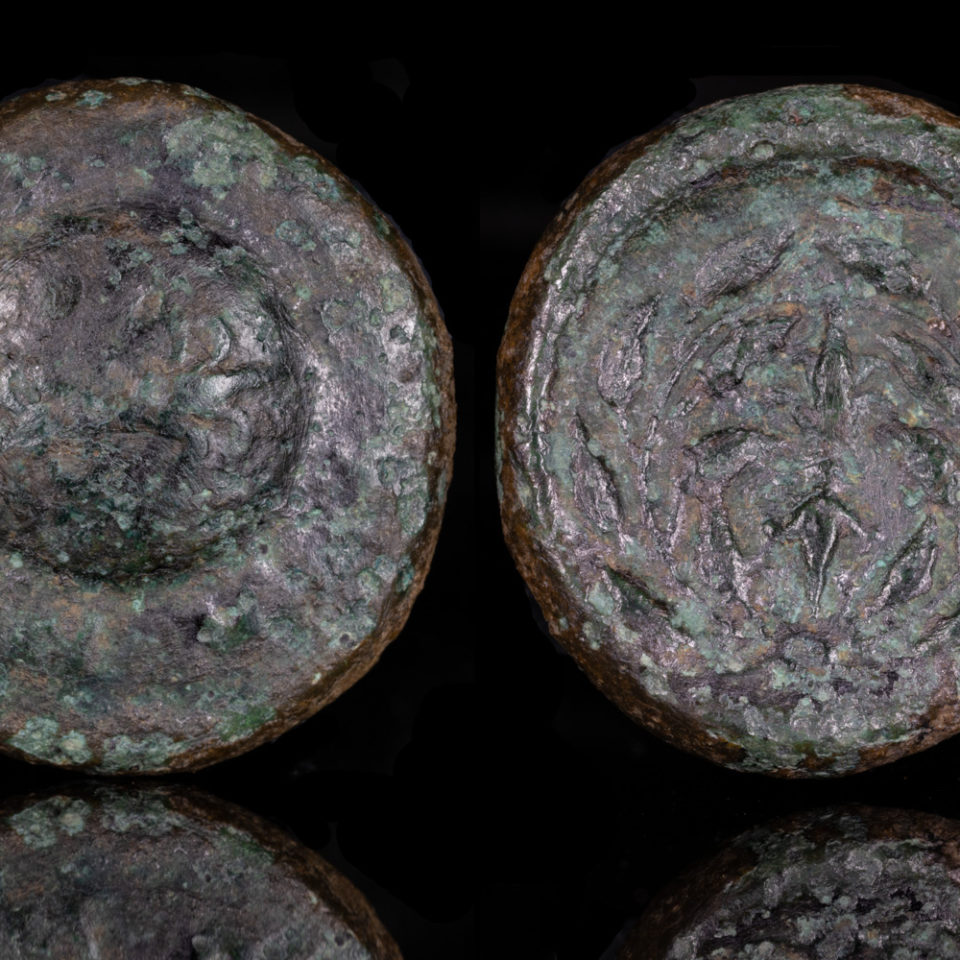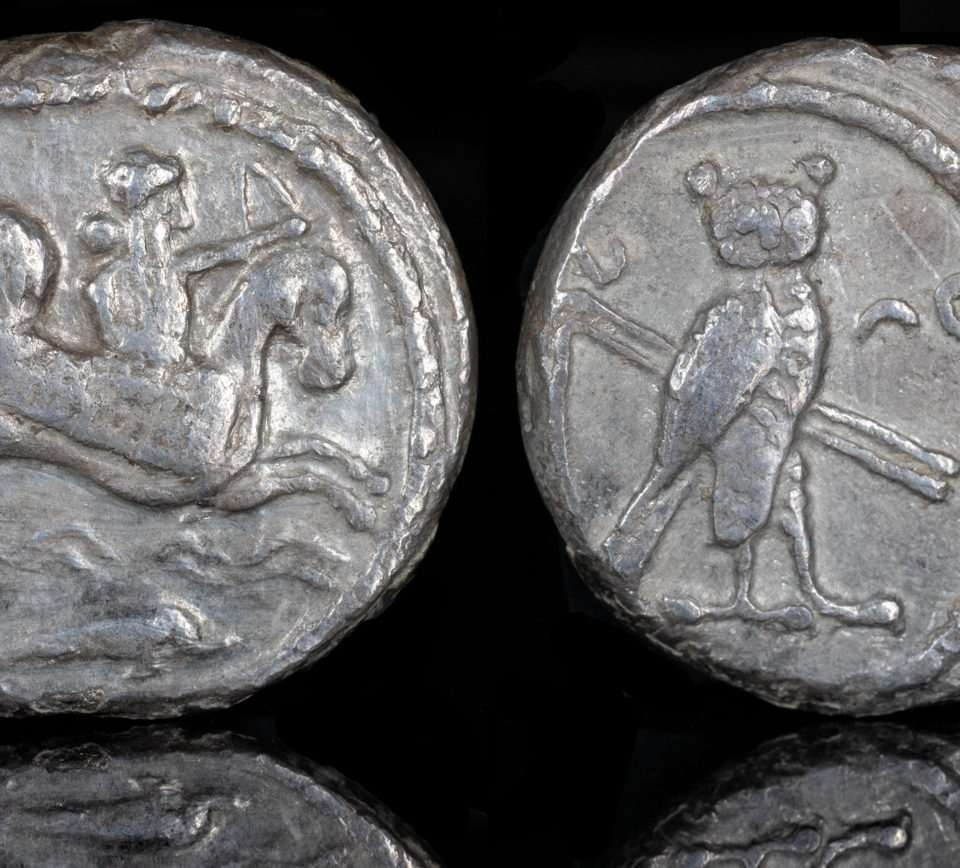I bought this coin last year in order to fill in my Polyperchon page in my Philip II, Alexander III, and the Age of the Diadochi collection. This is a relatively common coin, and I’m far from the first to display one here. However, after reading quite a bit on this period, I’m beginning to think that it was misattributed.

AR 1/5 Tetradrachm 2.57g
Minted under Adea Eurydike, Amphipolis, 318-317 BCE
Le Rider Taf. 46, 29; SNG ANS 731–735
Vs.: Kopf des Apollon mit Tänie n. r.
Rs.: Jüngling reitet n. r., unten seitlich gesehener Schild
Assuming the Le Rider was correct in dating it to 318/317 and placing it in Amphipolis, then I don’t think it actually belongs to Polyperchon. It was attributed to him primarily because he was regent, but he didn’t have control of Amphipolis at the time.
From my understanding, the following is where our major players were:
Polyperchon – We don’t know exactly where he was after his disastrous siege of Megalopolis, but the general information we have infers he was in the Aegean – probably trying to accomplish something in Asia Minor. He was not in Macedon.
Kassander – He was conducting a siege of Tegea. After Eurydike‘s and Philip III‘s deaths, he ended the siege and marched north to confront Olympias.
Olypmpias – She was in Epirus with Aeacides, who supported her in 317 BCE against Eurydike and Philip III. The battle (if it can be called that) took place near the Epirus/Macedon border.
So who was running Amphipolis at this time? Well, Philip III was in Amphipolis, but he wasn’t in charge. He was mentally incapacitated. Instead, it was his wife – Eurydike (born Adea) – running the show.
Of all the strong Argead women during this period, she was the fiercest and was one of two (the other being her mother Cynane) to move beyond the typical “behind the scenes” manipulation more typical of royal women at this time and seek military solutions. Her composure at Triparadeisos nearly gained her the entire army and, were she not female, would have resulted in the deaths of Antipater, Antigonos, and Seleukos.
It was Eurydike who made an alliance with Kassander (that ultimately helped little) and led the army against Olympias. If she accomplished that, then she was clearly in charge and therefore this coin should be attributed to her.
Note: The following books influenced this post. Were I at home with more time, I would have cited them directly.
Carney, Elizabeth Donnelly. Women and Monarchy in Macedonia. University of Oklahoma Press, 2021.
Diodorus, and Robin Waterfield. The Library, Books 16-20dPhilip II, Alexander the Great, and the Successors. Oxford University Press, 2019.
Romm, James. Ghost on the Throne. Vintage Press, 2012.
Arrian, and James Romm, The Landmark Arrian. Anchor Press, 2012. (referenced the appendices)



